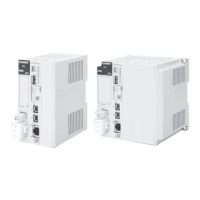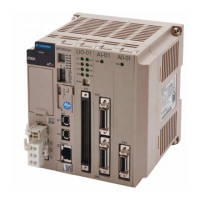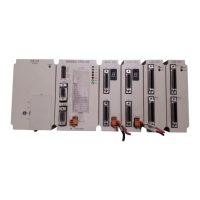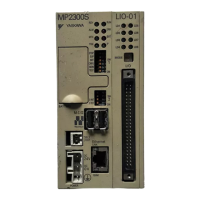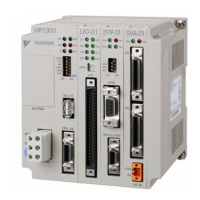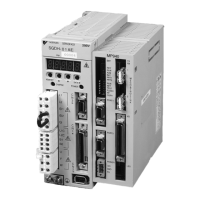4.1 User Program Types and Execution Timing
4.1.5 Registers
4-47
Data Types
There are different data types that you can use depending on the purpose of the application:
bit, integer, double-length integer, quadruple-length integer, real number, double-precision real
number, and address.
*1. These data types cannot be used for indirect designation of motion programs.
*2. Conforms to IEEE754 standards.
Symbol Data Type Range of Values Data Size Description
B Bit 1 (ON) or 0 (OFF) −
Used in relay circuits and to deter-
mine ON/OFF status.
W Integer
-32,768 to 32,767
(8000 to 7FFF hex)
1 word
Used for numeric operations. The
values in parentheses on the left
are for logical operations.
L
Double-length
integer
-2,147,483,648 to
2,147,483,647 (80000000 to
7FFFFFFF hex)
2 words
Used for numeric operations. The
values in parentheses on the left
are for logical operations.
Q
Quadruple-
length inte-
ger
*1
-9,223,372,036,854,775,808 to
9,223,372,036,854,775,807
(8000000000000000 to
7FFFFFFFFFFFFFFF hex)
4 words
Used for numeric operations. The
values in parentheses on the left
are for logical operations.
F Real number
± (1.175E-38
to 3.402E+38) or 0
2 words
Used for advanced numeric oper-
ations.
*2
D
Double-preci-
sion real num-
ber
*1
± (2.225E-308 to 1.798E+308)
or 0
4 words
Used for advanced numeric oper-
ations.
*2
A Address 0 to 2,097,152 −
Used only as pointers for address-
ing.
The MP3000-series Machine Controller does not have separate registers for each data type. As
shown in the following figure, the same address will access the same register even if the data
type is different. For example, MB00001003, a bit address, and the MW0000100, an integer
address, have different data types, but they both access the same register, MW0000100.
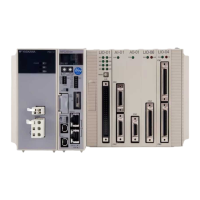
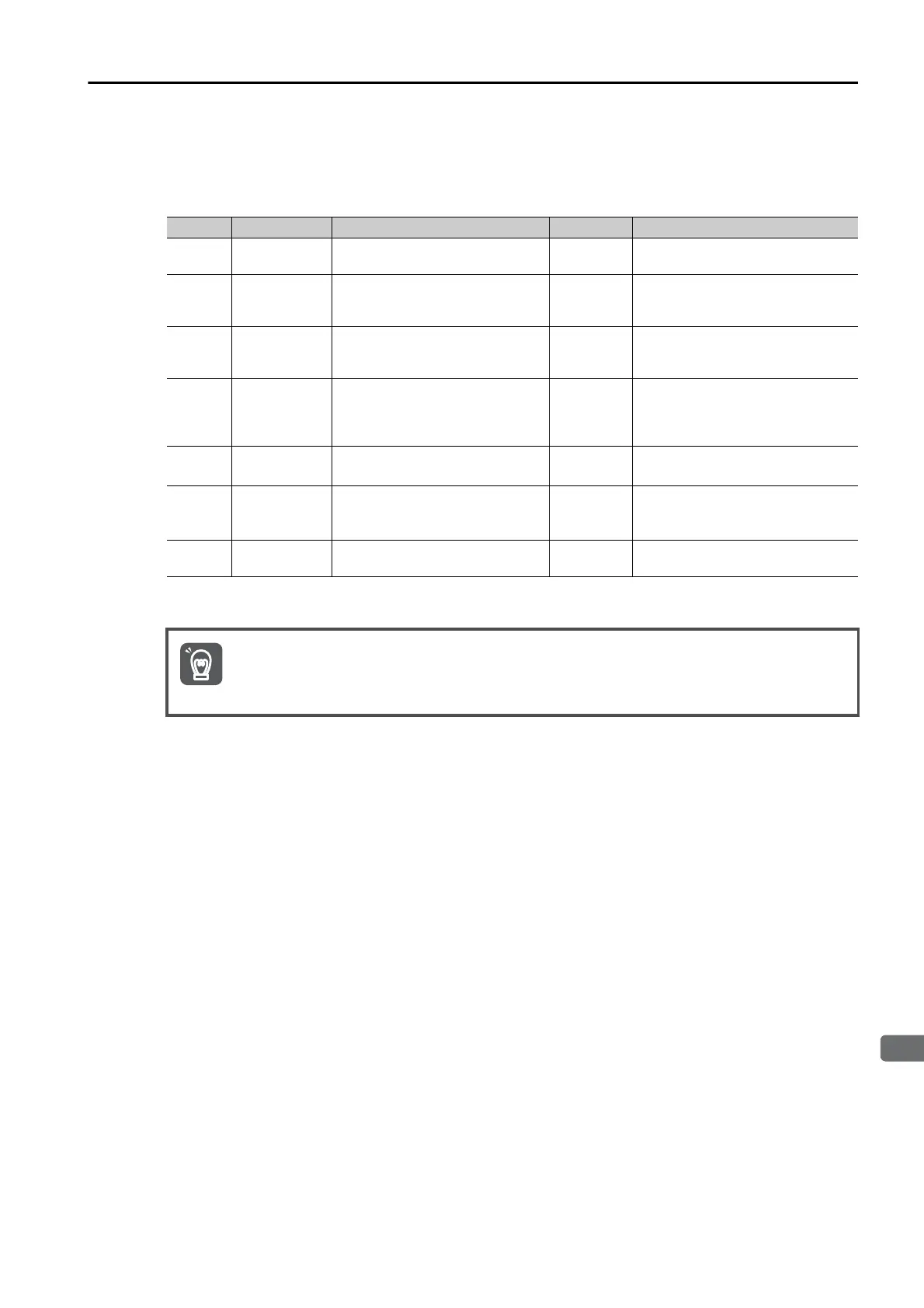